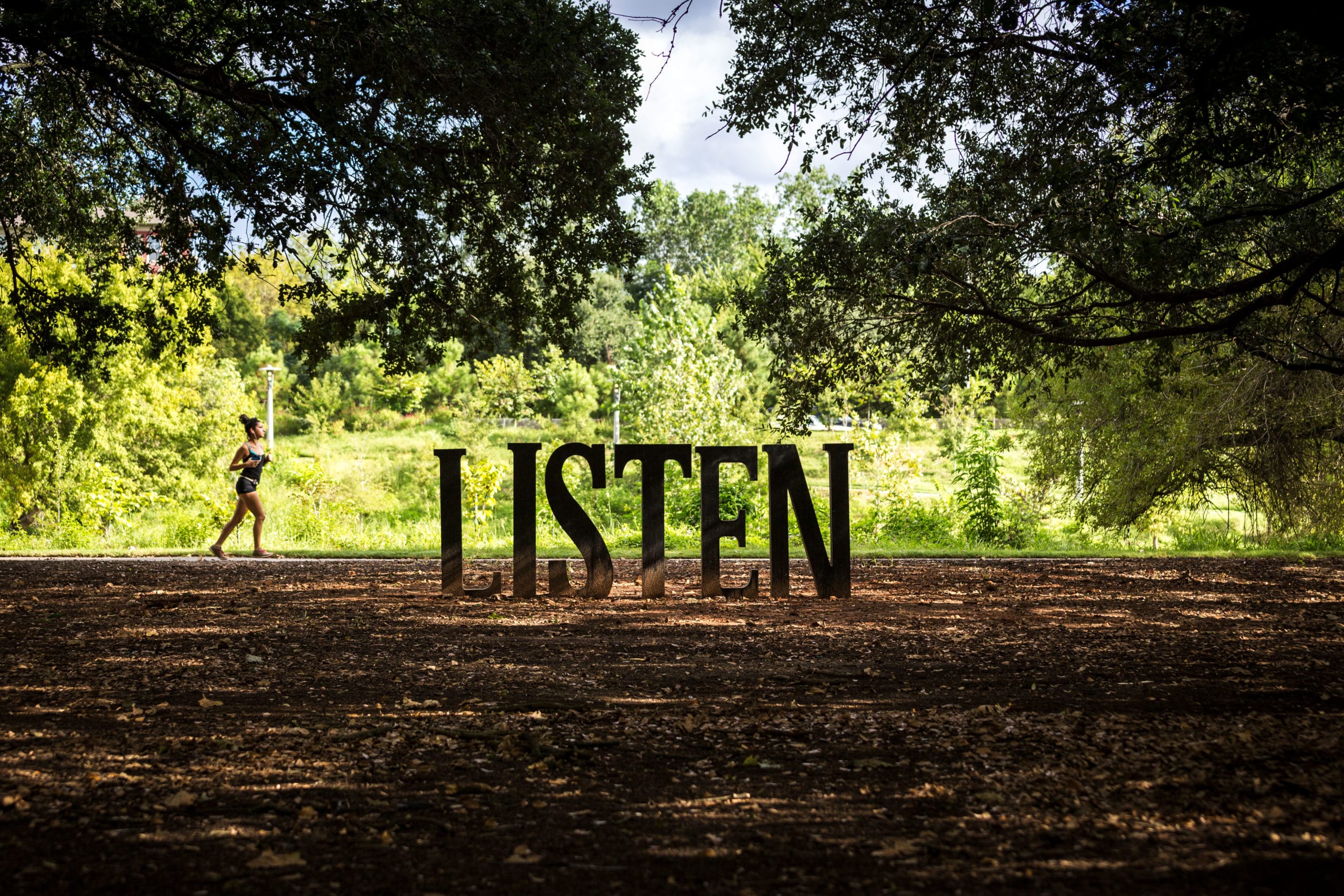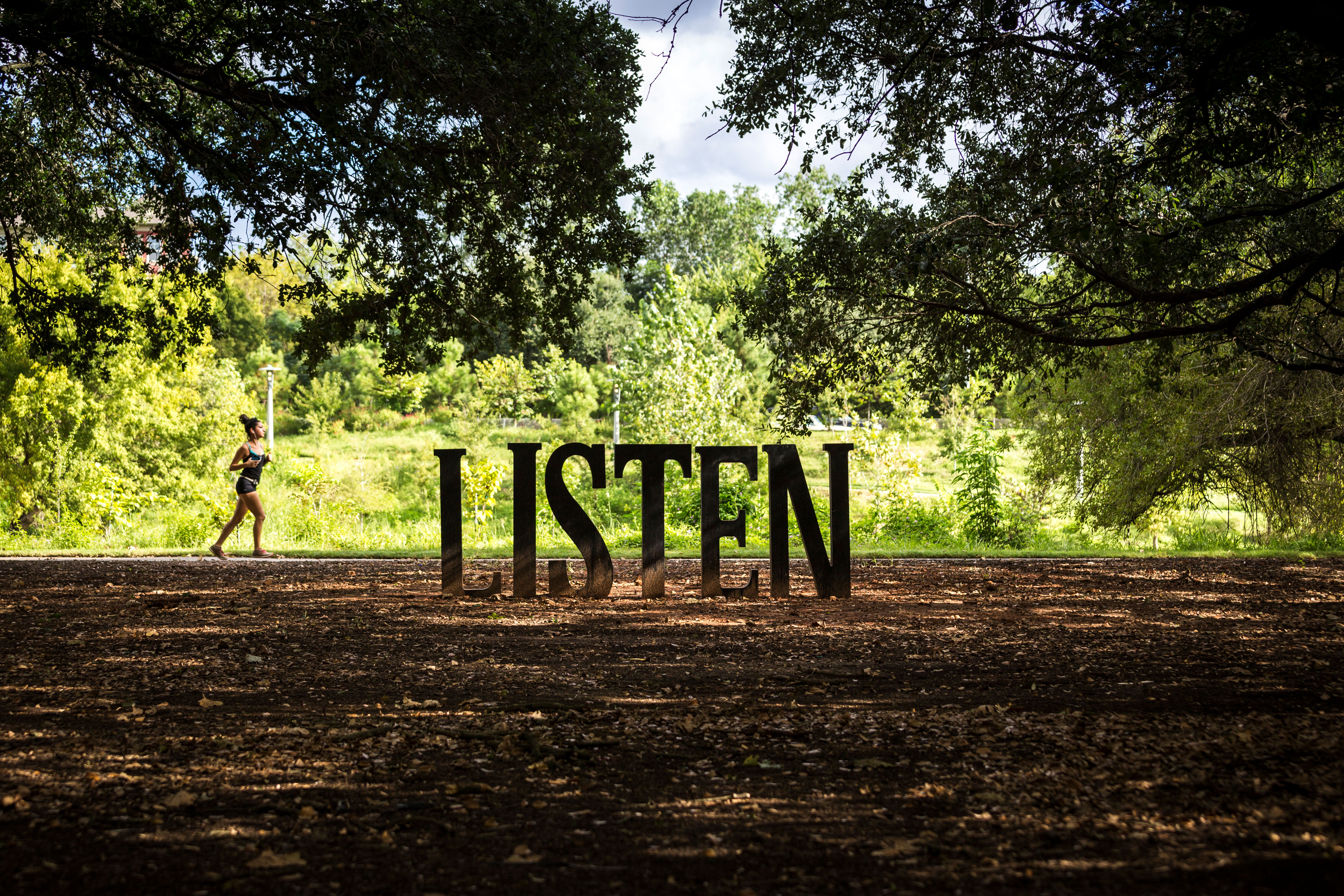
“Monumental Moments” at Buffalo Bayou Park.
[Photo: Jonnu Singleton]
A $58 million park restoration brings nature back to the city of Houston
PROJECT
LOCATION
Houston
SIZE
160 acres
COMPLETION
2015
COST
$58.5 million
TEAM
ARCHITECT
Page
LANDSCAPE ARCHITECT
SWA and Reed Hilderbrand
CONTRACTOR
Millis Construction
LIGHTING
L’Observatoire and artist
Stephen Korns
PROJECT MANAGER
Guy Hagstette
ARTISTS
John Runnels and
Anthony Thompson Shumate
Before the 160-acre Buffalo Bayou Park was completed in 2015, few Houstonians visited the swath of land from Shepherd Drive to Sabine Street, between Allen Parkway and Memorial Drive, just west of downtown Houston. Today, locals and visitors alike flock to the park for its trails, public art, kayak and bike rentals, and other amenities. “Buffalo Bayou Park has had a significant impact on Houston’s quality of life and economic vitality. It provides a major green space in the heart of the city,” says Anne Olson, president of the Buffalo Bayou Partnership (BBP). BBP is the nonprofit behind revitalizing the area.
The park truly offers something for everyone—hiking and bicycle trails, a two-acre dog park, an event space, coffee shop and cafe, and plenty of room to stretch out, have a picnic, or just relax. It’s also where locals and visitors can explore many meadows, prairies, and woodlands. Olson says simply having such a beautiful, expansive green space in the city has stimulated real estate development in nearby neighborhoods.
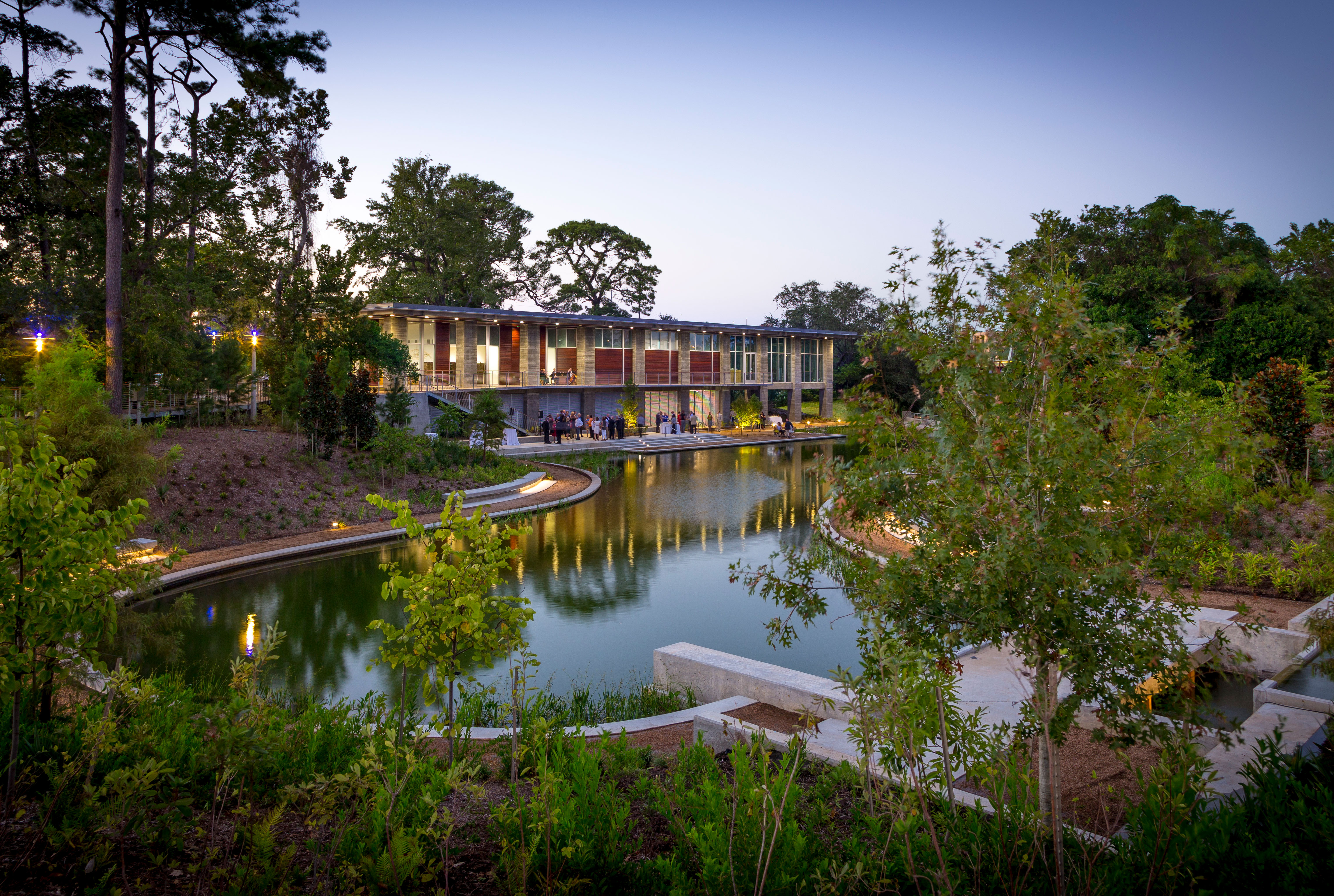
Lost Lake at Buffalo Bayou Park in Houston.
[Photo: Jonnu Singleton]
Getting the Park
For many people, this project was a long time coming. The park’s development started in 2010, when Houston’s Kinder Foundation provided BBP with a $30 million catalyst gift. The partnership then raised an additional $23.5 million, and the Harris County Flood Control District contributed another $5 million for the project. The park was completed in fall 2015.
“Our design and construction team were excellent,” Olson says. “SWA was the lead designer along with Page architects, Reed Hilderbrand landscape architects, and Millis Development & Construction. Guy Hagstette served in the capacity of project manager and did an incredible job.” Olson says the public played a large role in developing the park, too, as locals provided input at community meetings. “Before the park’s restoration, the area was mainly poorly maintained green space with deteriorated hike and bike trails. There were very few amenities—park benches, drinking fountains, lighting, etc. Very few Houstonians visited the park.”
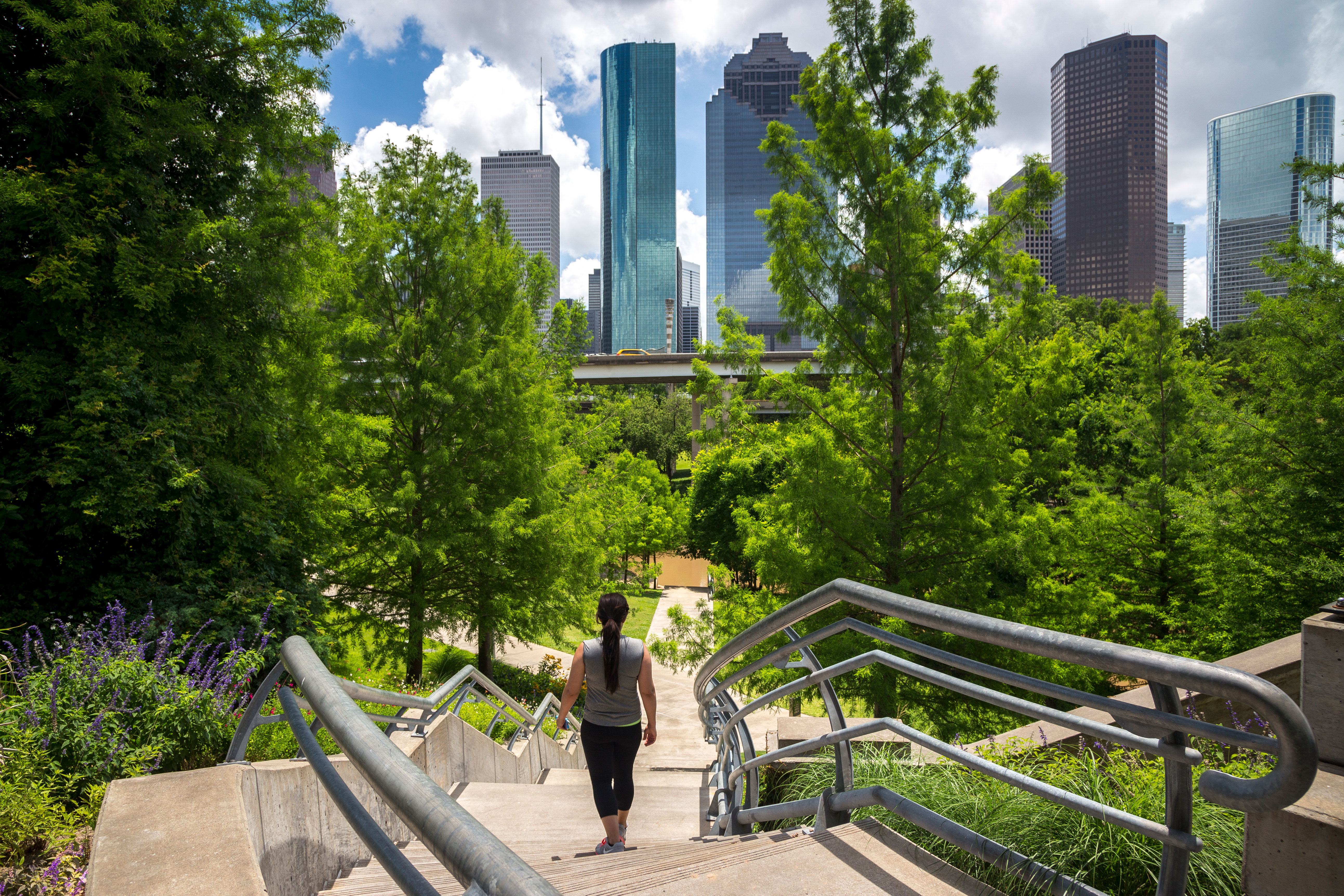
A team of architects and planners have renovated Buffalo Bayou Park to include expansive hiking and bicycling trails, a lakefront venue available for private events, an environmental art installation, and more.
[Photo: Jonnu Singleton]
The team behind the park was committed to keeping the space natural, planting more than 14,000 trees and replacing half the lawn with woodlands, prairies, and meadows while still having amenities to draw people in. BBP reintroduced native landscapes in wetlands, woodlands, meadows, lawns, and perennial gardens.
The topography is also special. “It’s one of the only sites in Houston that has sloping lawns and small hills. The designers took advantage of the site’s unique topography,” Olson says. To top it all off, there’s the stunning view of the downtown skyline. “You feel out in the natural world in a very urban space.”
Special paving that absorbs water was incorporated into the two visitor center parking areas in the park, and BBP made a conscious effort to install trash receptacles where park visitors can put recyclable trash, keeping with the mission of sustainability.
The Future of Buffalo Bayou Park
There’s a lot to look forward to at the park, too, especially given the events that will be held at the park’s newly opened Cistern—an amazing underground space (pictured, middle right) that’s as large as a football field. “With its 221 25-foot concrete columns, the space reminds visitors of the cisterns in Istanbul,” Olson says, adding that it will be the home of many art installations in the future.
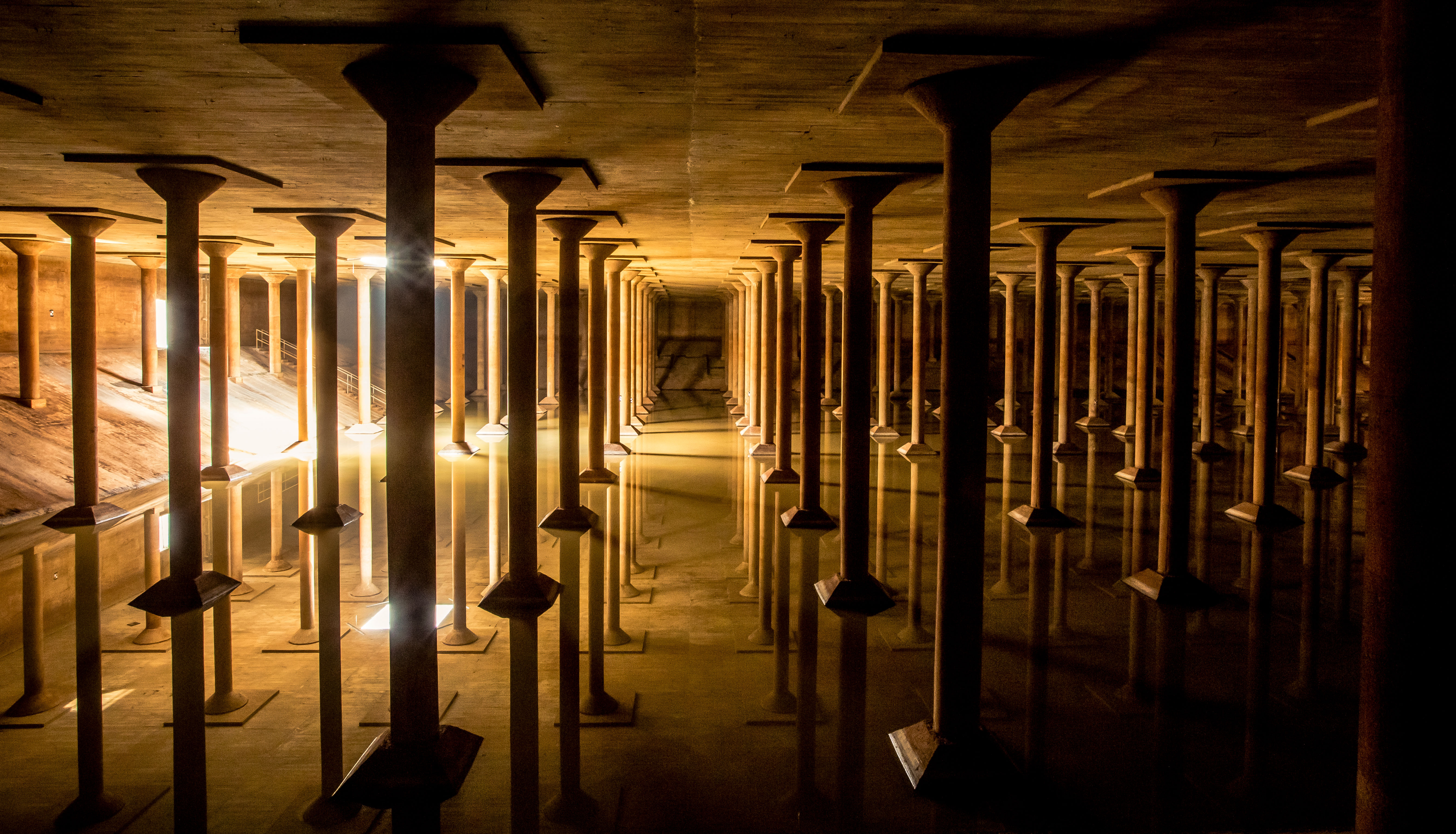
The Buffalo Bayou Park Cistern includes 221 25-foot concrete columns. Built in 1926, BBP re-discovered the site in 2011 when it was developing the park project.
[Photo: Katya Horner]
In May 2016, the Buffalo Bayou Park Cistern opened to the public. The 87,500-square-foot underground water reservoir was built in 1926 as one of the first drinking water reservoirs for Houston. It supported the municipal water system’s goals of fire suppression and drinking water storage for many decades. BBP re-discovered the site in 2011 when it was developing the park project.
With research, 3-D modeling by SmartGeoMetrics, and community input, BBP developed a plan to repurpose the Cistern into a public space that could also host rotating environmental art installations. The partnership secured grants exceeding $1.7 million from The Brown Foundation to bring the space up to code and make it accessible to the public.
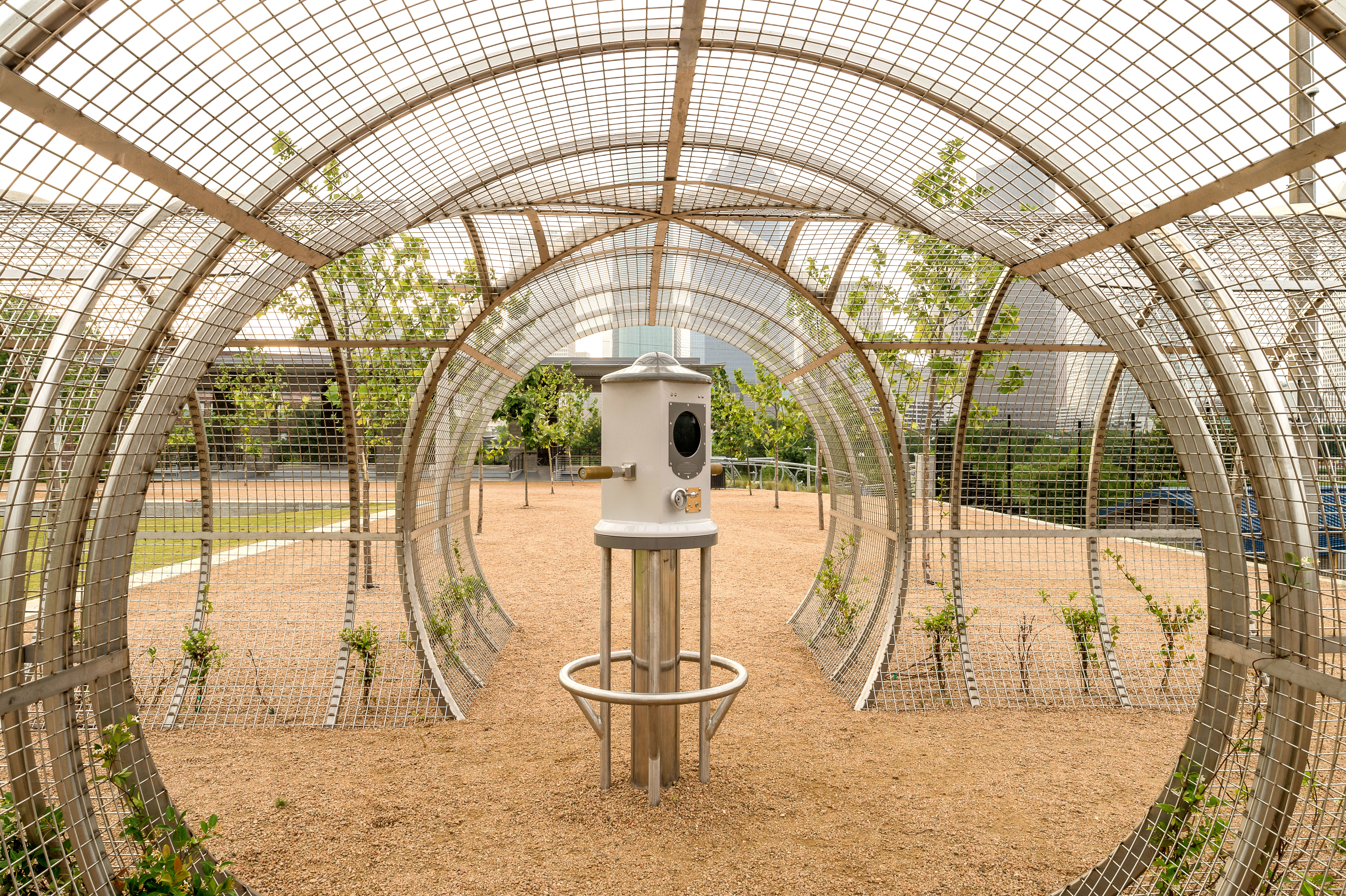
Through the Down Periscope, at Buffalo Bayou Park, visitors are able to peer into the 87,500-square-foot expanse of the Cistern below.
[Photo by Nash Baker]
The Cistern can also be viewed through an art installation unveiled in late 2016 called Down Periscope, by New York artist Donald Lipski. You can see the installation on top of the Cistern when you’re in the park or log on to the website (downperiscopehouston.com) to peer in and see it from anywhere.
While the park is already being enjoyed in all its glory, Olson says coffee breaks are on the way to visitors, too. In spring 2017, the final phase of the Silver LEED Certified Sunset Coffee Building is set to be complete.

